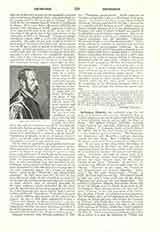

Orthodox Church, the technical name for the body of Christians who use the Byzantine Rite in various languages and are in union with the Patriarch of Constantinople but in schism with the Pope of Rome. The epithet Orthodox (Greek: orthodoksos) meaning “right believer”, is, naturally, claimed by people of every religion. It is almost exactly a Greek form of the official title of the chief enemies of the Greeks, i.e. the Moslems (mu’min, fidelis). The Monophysite Armenians call themselves ughapar, meaning exactly the same thing. How “Orthodox” became the proper name of the Eastern Church it is difficult to say. It was used at first, long before the schism of Photius, especially in the East, not with any idea of opposition against the West, but rather as the antithesis to the Eastern heretics—Nestorians and Monophysites. Gradually, although of course both East and West always claimed both names, “Catholic” became the most common name for the original Church in the West, “Orthodox” in the East. It would be very difficult to find the right name for this Church. “Eastern” is too vague, the Nestorians and Monophysites are Eastern Churches; “Schismatic” has the same disadvantage. “Greek” is really the least expressive of all. The Greek Church is only one, and a very small one, of the sixteen Churches that make up this vast communion. The millions of Russians, Bulgars, Rumanians, Arabs, and so on who belong to it are Greek in no sense at all. According to their common custom one may add the word “Eastern” to the title and speak of the Orthodox Eastern Church (Greek: e orthodoksos anatolike ekklesia). The Orthodox, then, are the Christians in the East of Europe, in Egypt and Asia, who accept the Councils of Ephesus and Chalcedon (are therefore neither Nestorians nor Monophysites), but who, as the result of the schisms of Photius (ninth cent.) and Cerularius (eleventh cent.), are not in communion with the Catholic Church. There is no common authority obeyed by all, or rather it is only the authority of “Christ and the seven Ecumenical Synods” (from Nicaea I, in 325, to Nicaea II, in 787). These sixteen Churches are: (I) The four Eastern patriarchates—Constantinople, Alexandria, Antioch, Jerusalem—and the Church of Cyprus, independent since the Council of Ephesus. (2) Since the great schism eleven new churches have been added, all but one formed at the expense of the once vast Patriarchate of Constantinople. They are the six national Churches of Russia, Greece, Servia, Montenegro, Rumania, and Bulgaria, four independent Churches in the Austro-Hungarian Monarchy, namely Carlovitz, Hermannstadt, Czernovitz, Bosnia-Herzegovina, and lastly the Church of Mount Sinai, consisting of one monastery separated from Jerusalem. One of these Churches, that of Bulgaria, is in schism with Constantinople since 1872. The total number of Orthodox Christians in the world is estimated variously as 95 to 100 millions. (See Eastern Churches; Greek Church; Constantinople, Heresyand Schism; Russia)
ADRIAN FORTESCUE

